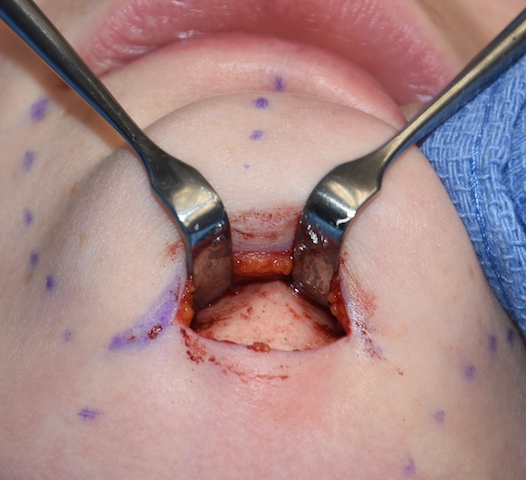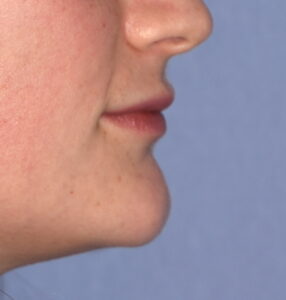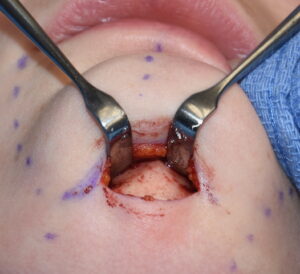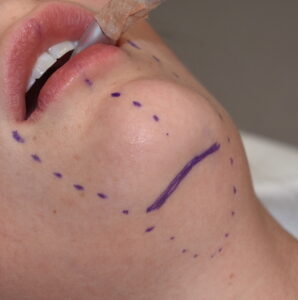Background: The shape of he chin is typically perceived in how it is seen from different angles…in the static non-smiling position. But it can also present aesthetic abnormalities when one is smiling from a dynamic standpoint. One very specific dynamic chin shape is soft tissue chin pad ptosis.
Ptosis of the chin is typically associated as a static deformity where soft tissue hangs off the end of the bone…usually after implant removal or other forms of intraoral chin surgery. But dynamic chin ptosis is uniquely different. The chin appears normal at rest and the soft tissue chin pad only protrudes downward when smiling. The chin almost has never has had any prior surgery.
While dynamic soft tissue pad ptosis is a recognized aesthetic chin deformity the exact mechanism for its appearance is not clear. In my observation there are multiple anatomic reasons usually associated with different forms of hard and soft tissue excesses.

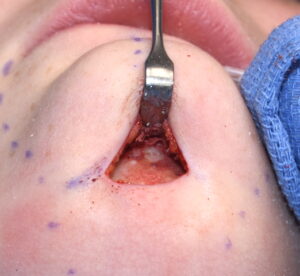
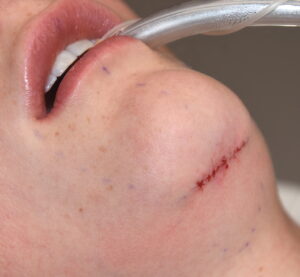
One cause of a dynamic chin ptosis can be an overlying projecting chin bone. But it doesn’t have to be the entire chin bone that is prominent. A midline keel of bone can serve as a pressure point against the soft tissue chin pad when it retracts backward causing it to be pushed downward. A submental chin reduction approach is an effective approach to treating it.
Case Highlights:
1) Dynamic chin ptosis is often associated with a borderline larger chin prominence.
2) The larger chin bone prominence often has a midline keel or v shape which is what creates the excessive chin projection and the soft tissue pad depression when smiling.
3) Through a submental approach the chin bone can be reshaped and the soft tissue chin pad tightened.
Dr. Barry Eppley
Indianapolis, Indiana

